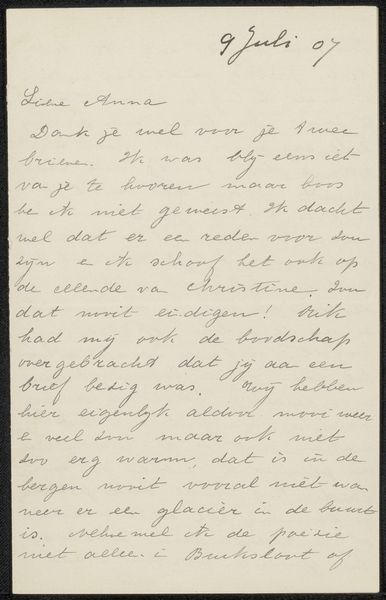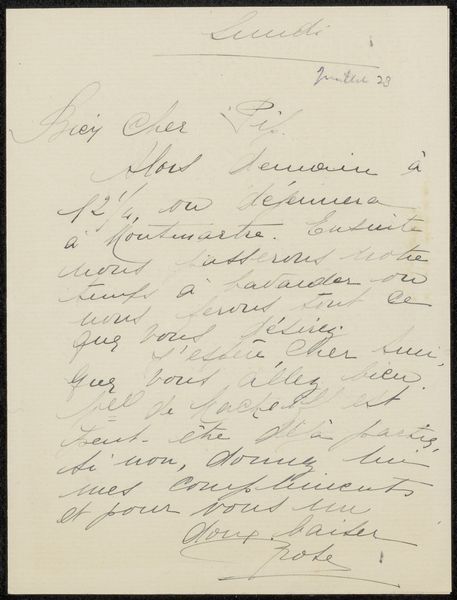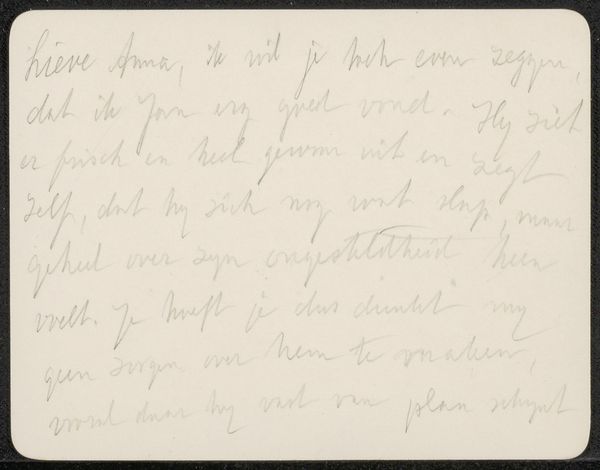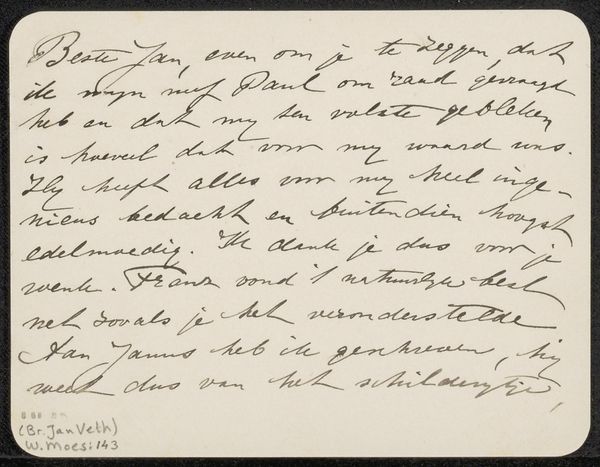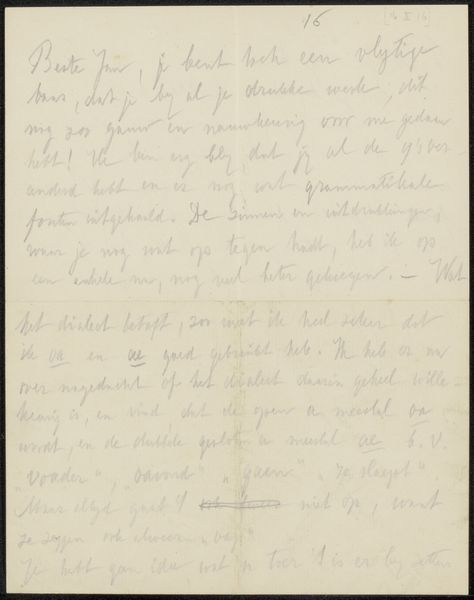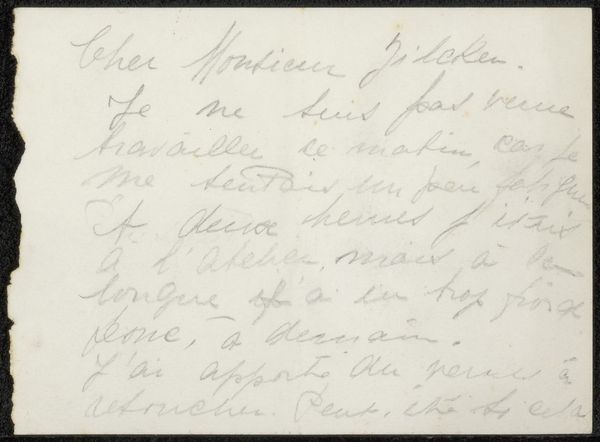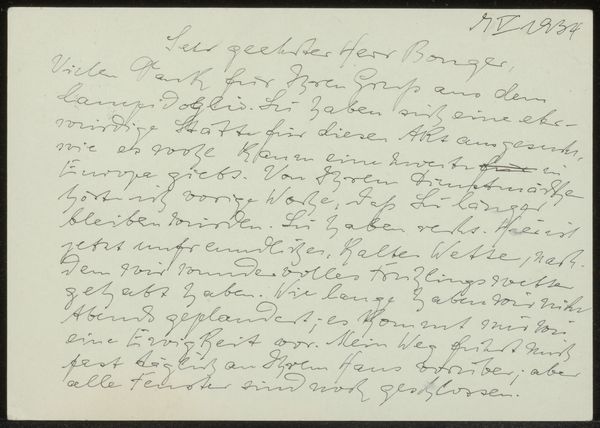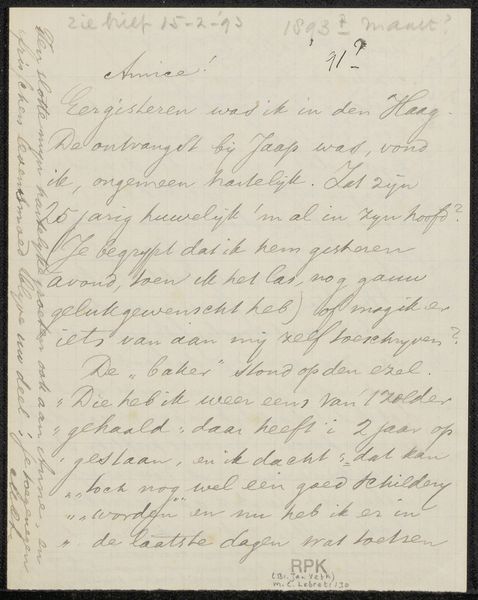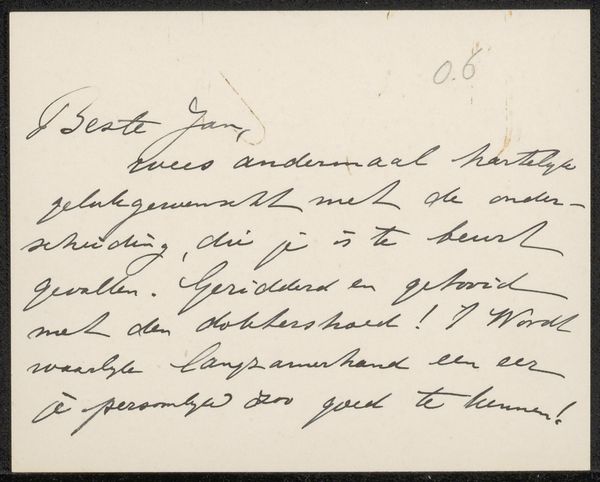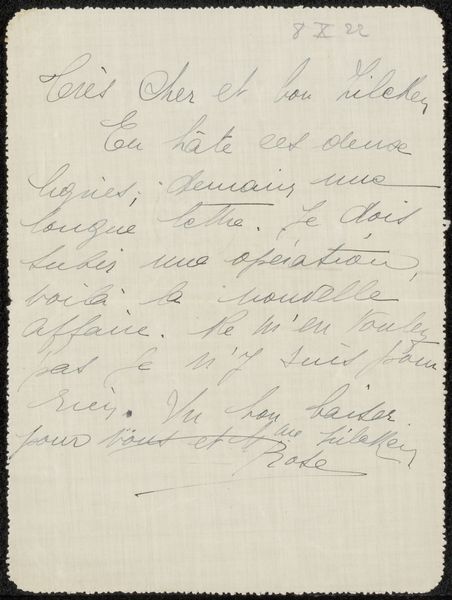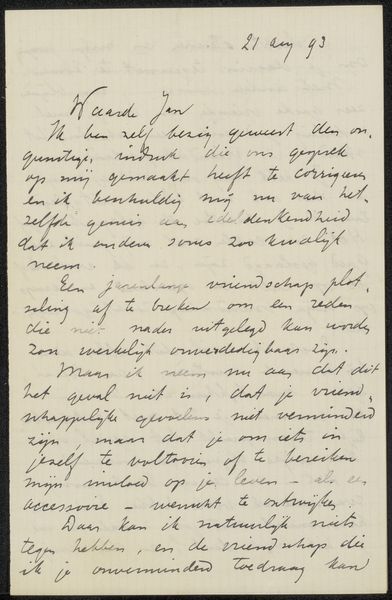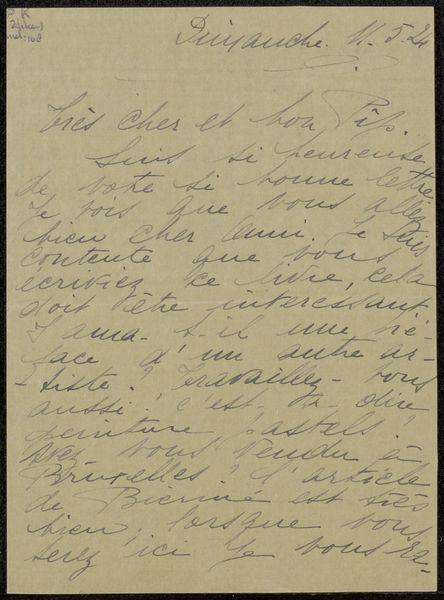
drawing, paper, pen
#
drawing
#
type repetition
#
script typography
#
hand-lettering
#
hand drawn type
#
feminine typography
#
hand lettering
#
paper
#
hand-drawn typeface
#
fading type
#
thick font
#
pen
#
handwritten font
Copyright: Rijks Museum: Open Domain
Curator: Looking at "Brief aan Anna Dorothea Dirks," potentially from 1916 by Wally Moes, crafted with pen on paper, my first reaction is drawn to the intimate and ephemeral nature of this piece. It is so gentle, faded almost, like a whispered secret. Editor: It’s interesting you say that, because as an historian, my immediate reaction revolves around its purpose and intended audience. It’s a letter. We can clearly see how postal services impacted communities on a daily basis. The public sphere was heavily reliant on postal infrastructures that we tend to undervalue. Curator: Absolutely, and that directness, of course, is crucial. However, consider how Moes employs hand-lettering, almost turning the message itself into an art form. There's a beautiful fragility in the script typography. The thick font is not overpowering but comforting. It invites you to read the most private things in a calming setting. It makes you want to curl up and feel warm and safe! Editor: That may be true for today's audiences. During Moes’s time, I argue it may have been a means of control to establish proper etiquette and convey societal status, even intimacy can be commodified. What at first glance seems deeply personal also served as a marker to those outside the correspondence about Moes’ standing. Curator: An intriguing thought, considering the subtle flourishes in the handwriting and letter. But even if serving such a purpose, does not the feminine typography, as you describe, contribute to the artwork’s meaning? Fading type adds a layer of mystery that transcends mere communication. It carries with it so many layers and secrets… It feels timeless. Editor: It is certainly that, but for me, what lingers is its socio-historical implications. In fact, letters, being such an intrinsic means to facilitate correspondence between people who would otherwise not communicate, become political objects; think of Rosa Luxemburg in jail, sending messages through her close confidantes, to sway socialist propaganda, right? So, I would even venture that something deeply ordinary is in itself evidence of an overarching power dynamic! Curator: Perhaps that duality is precisely its magic: personal, yet embedded in its socio-political context, urging one to be aware of every interaction! Editor: It leaves one pondering the extent to which we control our narratives and to whom we direct them. A subtle dance!
Comments
No comments
Be the first to comment and join the conversation on the ultimate creative platform.
